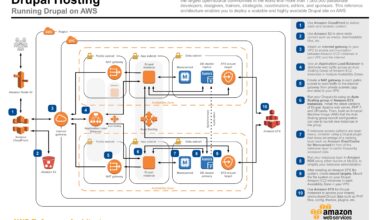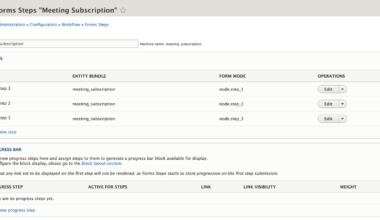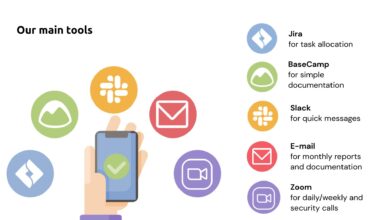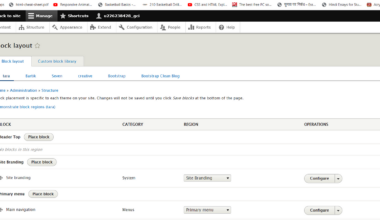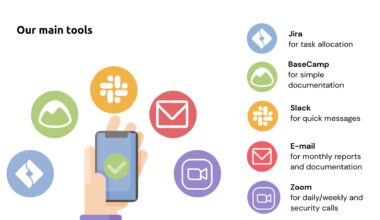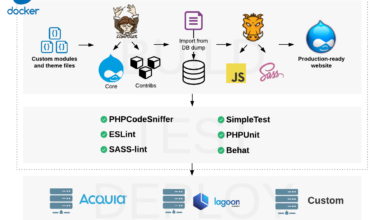What is Drupal 9?
Drupal 9 is the latest version of the popular content management system (CMS), Drupal. It was released in June 2020 and is the successor to Drupal 8. Unlike previous Drupal updates, Drupal 9 is not a complete overhaul of the CMS. Instead, it is a continuation of Drupal 8, with deprecated code removed and new features added.
Drupal 9 is built on top of Symfony 4 and requires PHP 7.3 or higher. It also includes several new features and improvements, including:
- Improved performance and scalability
- Enhanced content moderation and workflow tools
- Better media management capabilities
- Improved accessibility features
- Enhanced multilingual capabilities
- Better security and bug fixes
Drupal 9 is designed to make it easier for developers to build and maintain websites. It offers a flexible and modular architecture that allows developers to create custom solutions tailored to their specific needs. It also provides a robust API that makes it easy to integrate with other systems and applications.
Overall, Drupal 9 is a powerful and versatile CMS that can be used to build everything from small personal blogs to large enterprise websites. It is a popular choice for businesses, government agencies, and non-profit organizations that require a robust and flexible platform for managing their online content. In the next section, we’ll look at how to upgrade to Drupal 9.
Key Features of Drupal 9
Drupal 9 comes with a range of new features and improvements that make it more powerful, flexible, and user-friendly than its predecessors. Here are some of the key features of Drupal 9:
1. Improved Layout Builder
Drupal 9 offers an enhanced Layout Builder that allows users to create custom page layouts using a drag-and-drop interface. The new Layout Builder comes with several new features, including block nesting, inline block editing, and the ability to create reusable layout templates.
2. Better Content Workflow
Drupal 9 includes several new features that make it easier to manage content workflows and approvals. The new revision UI allows users to see the entire revision history of a piece of content, while the new Workspaces module provides a streamlined way to manage content changes across multiple environments.
3. Advanced Media Management
Drupal 9 comes with a new Media Library that allows users to easily manage and reuse media assets across their site. The Media Library supports a wide range of file types, including images, videos, and audio files, and also includes new features like drag-and-drop file uploads and bulk media management.
4. Accessibility Improvements
Drupal 9 includes several new accessibility improvements that make it easier for users with disabilities to navigate and use websites built on the platform. These improvements include better support for keyboard navigation, improved focus styling, and improved ARIA labeling.
5. Multilingual Capabilities
Drupal 9 comes with an improved multilingual system that makes it easier to create and manage websites in multiple languages. The new system includes better support for right-to-left languages, improved translation workflows, and better language detection and selection.
6. Increased Security
Drupal 9 includes several security improvements that make it a safer and more secure platform for building websites. These improvements include better password hashing algorithms, stricter database access controls, and improved security reporting and auditing.
In conclusion, Drupal 9 is a powerful and versatile CMS that offers a range of new features and improvements that make it easier to build and maintain websites. Whether you’re a developer looking to create custom solutions or a content creator looking for a user-friendly platform, Drupal 9 has something to offer. If you’re currently using Drupal 8, upgrading to Drupal 9 is easy and well worth the effort
Upgrading to Drupal 9
Upgrading to Drupal 9 is a straightforward process, especially if you’re already using Drupal 8. Here are the steps you need to follow to upgrade your site to Drupal 9:
1. Check Your Site’s Compatibility
Before upgrading to Drupal 9, you need to make sure that your site is compatible with the new version. You can use the Upgrade Status module to check your site’s compatibility with Drupal 9, and it will also provide you with a list of any modules that need to be updated or removed.
2. Update Your Modules and Themes
Once you’ve checked your site’s compatibility, you need to update your modules and themes to their latest versions. You can use the Composer Manager or Drush to update your modules and themes automatically.
3. Remove Deprecated Code
Drupal 9 removes some deprecated code from Drupal 8, so you need to remove any deprecated code that your site is using. The Upgrade Status module will provide you with a list of any deprecated code that your site is using, and you can update it accordingly.
4. Update to Drupal 9
After you’ve updated your modules and themes and removed any deprecated code, you can update to Drupal 9. You can use the built-in update process in Drupal 8 to update to Drupal 9, or you can download and install Drupal 9 manually.
5. Test Your Site
After updating to Drupal 9, you need to test your site thoroughly to make sure everything is working correctly. You can use the Upgrade Status module to check for any errors or issues, and you can also test your site’s functionality and performance.
6. Enjoy the Benefits of Drupal 9
Once you’ve successfully upgraded to Drupal 9, you can enjoy its new features and improvements. Drupal 9 offers better performance, enhanced content workflow, improved media management, and better accessibility, among other things.
In conclusion, upgrading to Drupal 9 is a straightforward process that can be done in a few simple steps. By upgrading to Drupal 9, you can benefit from its new features and improvements and ensure that your site is secure and up-to-date. So, if you’re still using Drupal 8 or an older version of Drupal, it’s time to upgrade
Benefits of Drupal 9
Drupal 9 offers a range of benefits for developers, content creators, and site administrators. Here are some of the key benefits of Drupal 9:
1. Improved Performance and Scalability
Drupal 9 is built on top of Symfony 4, which provides better performance and scalability than previous versions of Drupal. Symfony 4 comes with several performance optimizations, including faster HTTP requests and improved caching, which can help improve the speed and responsiveness of your site.
2. Enhanced Security
Drupal 9 comes with several security enhancements, including improved password hashing algorithms, stricter database access controls, and better security reporting and auditing. These improvements help make Drupal 9 a safer and more secure platform for building websites.
3. Better Content Workflow and Moderation
Drupal 9 includes several new features that make it easier to manage content workflows and approvals. The new revision UI allows users to see the entire revision history of a piece of content, while the new Workspaces module provides a streamlined way to manage content changes across multiple environments. This makes it easier for content creators to collaborate and manage their content more efficiently.
4. Improved Accessibility Features
Drupal 9 includes several new accessibility improvements that make it easier for users with disabilities to navigate and use websites built on the platform. These improvements include better support for keyboard navigation, improved focus styling, and improved ARIA labeling.
5. Better Multilingual Capabilities
Drupal 9 comes with an improved multilingual system that makes it easier to create and manage websites in multiple languages. The new system includes better support for right-to-left languages, improved translation workflows, and better language detection and selection. This makes it easier for businesses and organizations to reach a global audience and expand their reach.
6. Better Media Management Capabilities
Drupal 9 comes with a new Media Library that allows users to easily manage and reuse media assets across their site. The Media Library supports a wide range of file types, including images, videos, and audio files, and also includes new features like drag-and-drop file uploads and bulk media management. This makes it easier for content creators to manage their media assets and create engaging content for their audience.
Overall, Drupal 9 offers a range of benefits that make it easier to build
Final Thoughts
Drupal 9 is a powerful and versatile CMS that offers a range of new features and improvements that make it a top choice for developers, content creators, and site administrators. With its improved performance, scalability, security, and accessibility features, Drupal 9 is designed to make it easier for businesses and organizations to build and manage their online content.
Upgrading to Drupal 9 is a straightforward process that can be done in a few simple steps. By upgrading to Drupal 9, you can benefit from its new features and improvements and ensure that your site is secure and up-to-date. Additionally, you can take advantage of its improved media management capabilities, multilingual support, and content workflow tools to create engaging and personalized experiences for your audience.
Overall, Drupal 9 is a CMS that offers a wide range of benefits for businesses and organizations looking to build and manage their online content. Its flexible and modular architecture makes it easy for developers to create custom solutions tailored to their specific needs, while its user-friendly interface and powerful API make it a popular choice for content creators and site administrators. So, if you’re looking for a powerful and versatile CMS, Drupal 9 is definitely worth considering.












